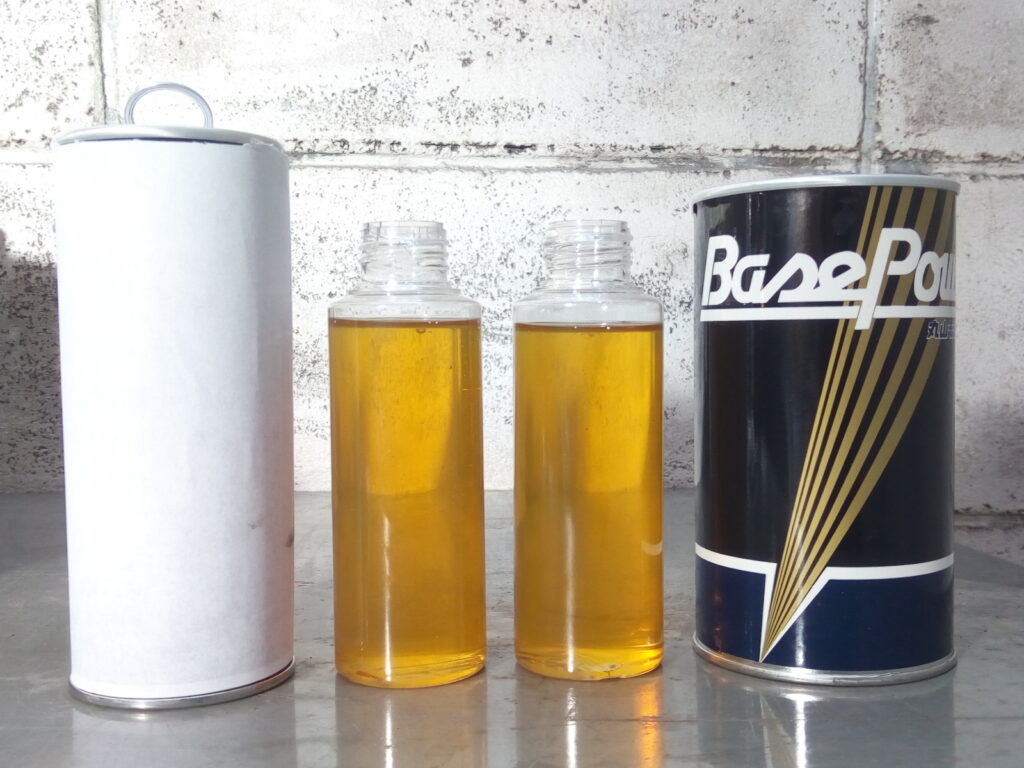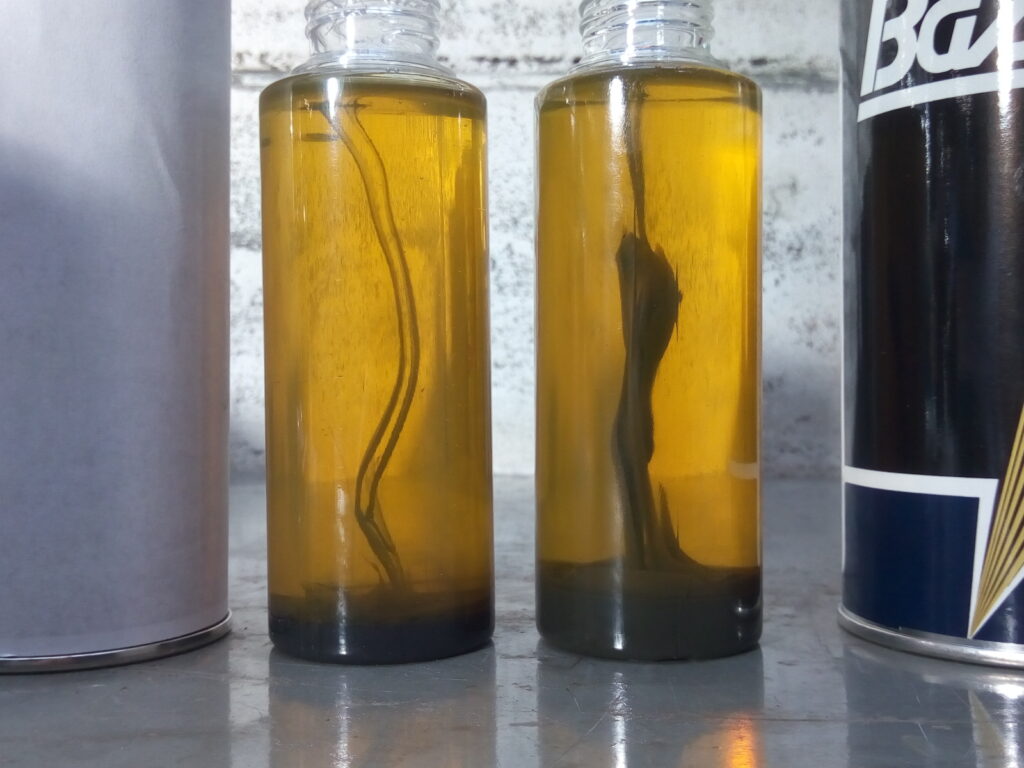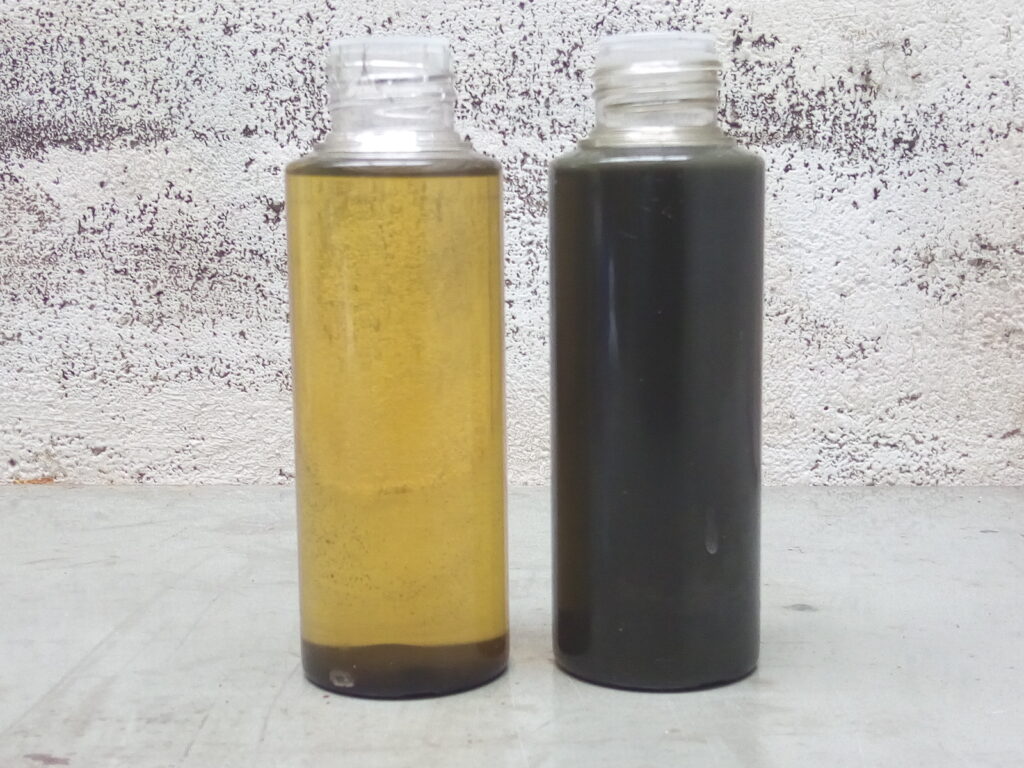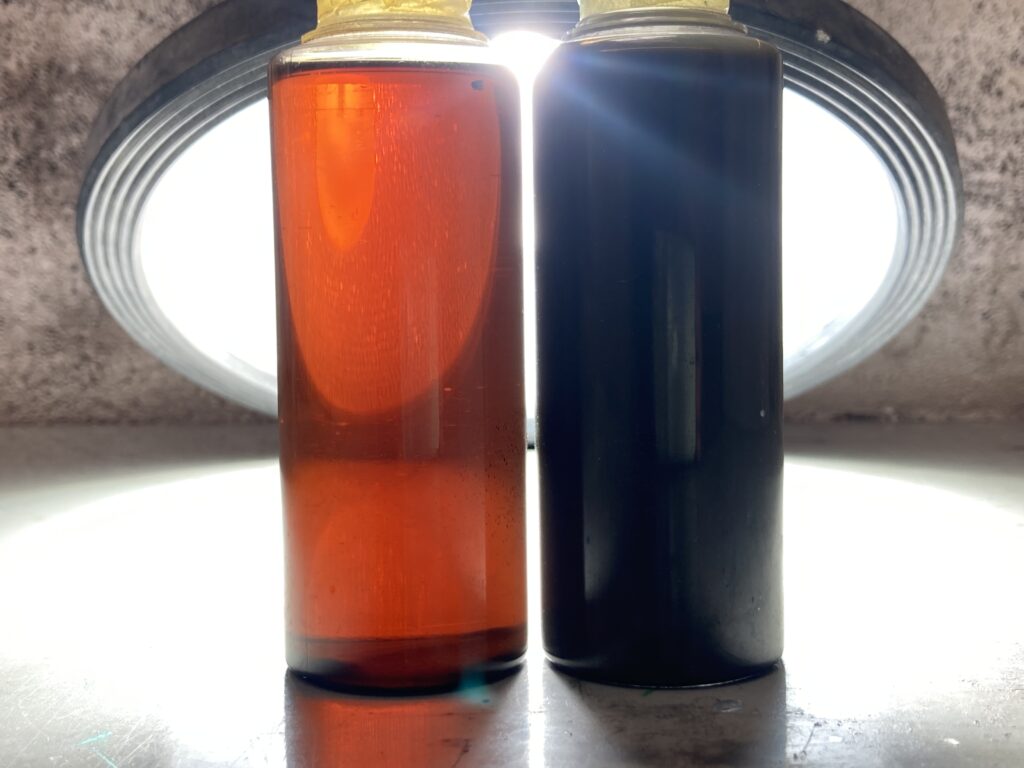In an engine where metal parts rub against each other, it’s impossible to completely avoid metal wear.
Engine oil circulating inside plays a crucial role in reducing direct metal-to-metal contact and minimizing wear.
The most significant wear occurs during cold starts. It takes at least a few seconds for the oil pump to circulate oil throughout the engine and stabilize oil pressure.
Moreover, engine parts are designed to have optimal clearances at stable operating temperatures (considering thermal expansion, they may be oval or tapered when cold). Simply put, clearances aren’t ideal during the warm-up period (which is why warm-up operation is so important).
Therefore, until the engine reaches a stable state, the oil film performance of the residual oil in various parts is crucial and relied upon heavily.
Prioritizing engine protection over fuel economy, especially for high-mileage vehicles, I recommend not only the standard MOTUL H-Tech 100Plus 5W30 but also the more robust MOTUL 8100 X-cess 5W40 (ACEA A3/B4 spec).
Thicker oil films help transition to fluid lubrication faster, significantly reducing and delaying wear.
However, as mentioned in the previous article, cars requiring ultra-low viscosity oils for fuel efficiency are becoming more common, making it difficult to ignore manufacturer specifications.
Low-viscosity oils inherently have thinner films, which is disadvantageous for engine protection.
Manufacturers are devising ways to balance fuel efficiency and wear resistance by incorporating various friction modifiers (FM) and applying special coatings to sliding surfaces.
It’s clear that engine lubrication operates in a challenging domain where such innovations are essential. There are concerns about the effectiveness of general FMs at lower temperatures and potential unforeseen issues in the medium to long term.
Now, I’d like to revisit an engine oil additive I’ve been selling officially for about six years, recommended by a veteran mechanic: “Maruyama Molybdenum.”
When first introduced to this molybdenum disulfide-based additive, which various companies have been selling for decades, I was skeptical rather than impressed.
I’ve long acknowledged the excellent properties of molybdenum disulfide itself.
I never skip applying a thin layer of molybdenum disulfide paste to critical areas during initial engine assembly to prevent seizure and galling, and it’s still commonly used in driveshaft grease.
Molybdenum disulfide maintains good lubrication even at extremely low temperatures (-180°C) and has a melting point of 1800°C, more than sufficient for oil additive applications.
It’s a very soft natural mineral that doesn’t damage metals. Its unique crystal structure is often compared to a stack of playing cards.
A stack of cards resists vertical compression but slides easily horizontally, illustrating molybdenum disulfide’s combination of extreme pressure resistance and lubricity.
However, as a solid lubricant, molybdenum disulfide doesn’t dissolve in oil. I had a negative impression that it worked well immediately after addition but quickly lost effectiveness, potentially settling and forming sludge with continued use.
But Maruyama Molybdenum is different.
Its average particle size of 0.1 micrometers is impressive, but what’s truly remarkable is its dispersion stability.
Such fine particles tend to agglomerate, and it’s unusually strange to see particles with about five times the specific gravity of engine oil remain completely suspended.
I began a small verification test in January 2019, which is still ongoing.
I’m comparing the dispersion state of Maruyama Molybdenum and another company’s molybdenum additive in engine oil.
Two identical containers were filled with equal amounts of 5W30 engine oil, each with 5% additive concentration as recommended by the manufacturers.
The containers were shaken thoroughly (January 16, 2019).
After 15 days of settling (January 31, 2019),
the other company’s molybdenum additive appeared slightly lighter. For clarity, I backlit the containers.
This much difference emerged after just two weeks of settling.
After about six months of further settling (June 27, 2019),
the other company’s molybdenum additive had completely settled, visible even without backlighting.
Now, about 5 years and 3 months since the experiment began (April 27, 2024):
The other company’s molybdenum-added oil has degraded and darkened, making it difficult to see. When backlit with a strong light:
Maruyama Molybdenum hasn’t settled at all, remaining as it was at the start of the experiment, and doesn’t allow the strong mercury lamp light to pass through.
Maruyama Molybdenum’s primary feature is this “dispersion stability.” I imagine it uses a special dispersant (likely a type of surfactant) to create electrostatic repulsion between molecules, keeping the ultra-fine particles suspended at a distance from each other.
With over 40 years of proven results, I understand that the manufacturer continues to make improvements in line with the times while maintaining their fundamental approach.
I believe that engines (internal combustion engines) that convert fuel combustion energy into power have localized environments that can be more severe than anticipated.
While the trend is towards ultra-low viscosity engine oils for fuel efficiency, I can’t shake concerns about long-term and high-mileage use.
Molybdenum disulfide is an excellent friction modifier. It’s a high-performance friction reducer that couldn’t be used due to settling issues.
I’ve confirmed through over five years of testing that Maruyama Molybdenum has brilliantly overcome this technical challenge.
I expect that the ultra-fine molybdenum disulfide particles, stably suspended in the oil film within micro-gaps, can protect the engine from instantaneous strong impacts and wear, especially during cold starts and warm-up, much like the molybdenum paste used in engine assembly. This could potentially achieve both fuel efficiency and engine protection.
Of course, combining it with conventional viscosity engine oils provides extra protection and may further delay wear.
Currently manufactured Maruyama Molybdenum is slightly less viscous than 5W30, around 0W20. When used in the recommended amount, I believe it has minimal impact on the engine oil’s viscosity characteristics.








Leave a Reply